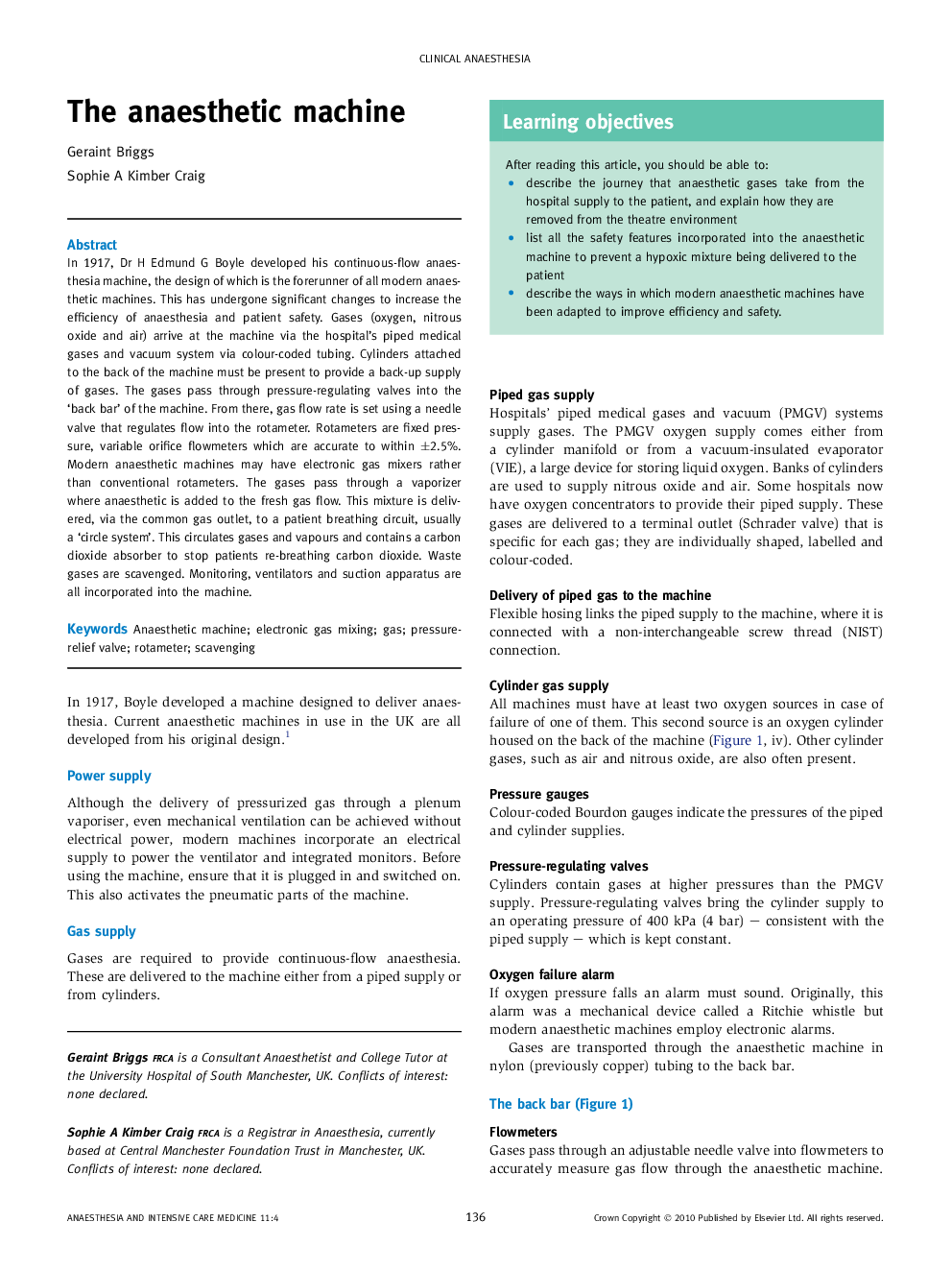| کد مقاله | کد نشریه | سال انتشار | مقاله انگلیسی | نسخه تمام متن |
|---|---|---|---|---|
| 2743228 | 1148657 | 2010 | 4 صفحه PDF | دانلود رایگان |

In 1917, Dr H Edmund G Boyle developed his continuous-flow anaesthesia machine, the design of which is the forerunner of all modern anaesthetic machines. This has undergone significant changes to increase the efficiency of anaesthesia and patient safety. Gases (oxygen, nitrous oxide and air) arrive at the machine via the hospital's piped medical gases and vacuum system via colour-coded tubing. Cylinders attached to the back of the machine must be present to provide a back-up supply of gases. The gases pass through pressure-regulating valves into the ‘back bar’ of the machine. From there, gas flow rate is set using a needle valve that regulates flow into the rotameter. Rotameters are fixed pressure, variable orifice flowmeters which are accurate to within ±2.5%. Modern anaesthetic machines may have electronic gas mixers rather than conventional rotameters. The gases pass through a vaporizer where anaesthetic is added to the fresh gas flow. This mixture is delivered, via the common gas outlet, to a patient breathing circuit, usually a ‘circle system’. This circulates gases and vapours and contains a carbon dioxide absorber to stop patients re-breathing carbon dioxide. Waste gases are scavenged. Monitoring, ventilators and suction apparatus are all incorporated into the machine.
Journal: Anaesthesia & Intensive Care Medicine - Volume 11, Issue 4, April 2010, Pages 136–139